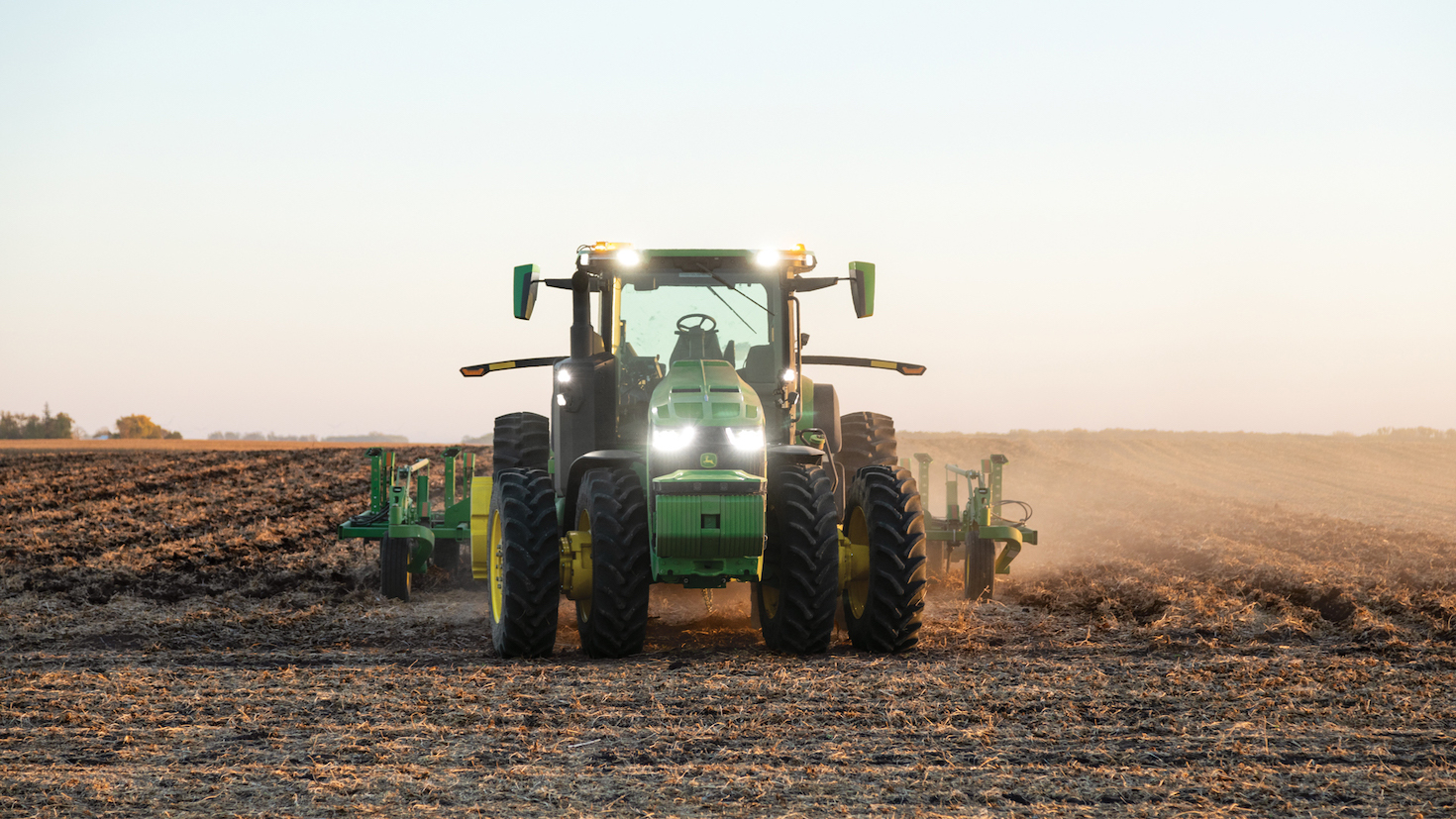According to statements from union officials, United Auto Workers (UAW) will begin negotiating a...
How Autonomous and Other Practices are Changing Farming

By William Boston, Wall Street Journal
In the verdant hills of Washington state's Palouse region, Andrew Nelson's tractor hums through the wheat fields on his 7,500-acre farm. Inside the cab, he's not gripping the steering wheel - he's on a Zoom call or checking messages.
A software engineer and fifth-generation farmer, Nelson, 41, is at the vanguard of a transformation that is changing the way we grow and harvest our food. The tractor isn't only driving itself, its array of sensors, cameras, and analytic software are also constantly deciding where and when to spray fertilizer or whack weeds.
Many modern farms already use GPS-guided tractors and digital technology, such as farm-management software systems. Now, advances in artificial intelligence mean that the next step - the autonomous farm, with only minimal human tending - is finally coming into focus.
Imagine a farm where fleets of autonomous tractors, drones and harvesters are guided by AI that tweaks operations minute by minute based on soil and weather data. Sensors would track plant health across thousands of acres, triggering precise sprays or irrigation exactly where needed. Farmers could swap long hours in the cab for monitoring dashboards and making high-level decisions. Every seed, drop of water and ounce of fertilizer would be optimized to boost yields and protect the land - driven by a connected system that gets smarter with each season.
Much of the technology to power an autonomous revolution in agriculture already exists or is nearly ready for market launch.
"We're just getting to a turning point in the commercial viability of a lot of these technologies," says David Fiocco, a senior partner at McKinsey & Co. who leads research on agricultural innovation.
A McKinsey survey in 2022 found that around two-thirds of American farms use digital systems to manage their farm operations, but only 15% of large farms and just 4% of smaller ones have yet invested significantly in robotics or automation. Fiocco expects the use of robots to rise dramatically in the coming years.
Despite the promise of digital tools and autonomous machines, cost is a big barrier.
Connectivity is another hurdle. Robots need to talk to each other. Moving data to a cloud requires broadband internet, and from a remote field that likely needs to be wireless. But wireless internet and land-based broadband aren't available everywhere in rural America. In developing countries, the digital gap is even wider.
Some farmers are experimenting with edge computing, a networking design that stores data closer to where it originates. But experts say ultimately farms need to be connected to cloud-based systems.
Here's a look at some of the essential components in the vision of the autonomous farm.
Autonomous tractors
Tractors that can plant, till and harvest with little, or only remote, human supervision are moving from prototype to practice.
Fruit-picking robots and drones
Automation, now most often used on large farms with wheat or corn laid out in neat rows, is a bigger challenge for crops like fruits and berries, which ripen at different times and grow on trees or bushes. Maintaining and harvesting these so-called specialty crops is labor-intensive. "In specialty crops, the small army of weeders and pickers could soon be replaced by just one or two people overseeing the technology. That may be a decade out, but that's where we're going," says Fiocco.
Remote sensing, image analytics
Drones and satellites, guided by artificial intelligence, are turning farms into data-driven operations. By capturing detailed images and sensor readings, they create "digital twins" - virtual replicas of fields that show exactly where crops are too dry, too wet or under attack by disease or pests. This technology lets farmers spot problems early and target interventions more precisely, cutting waste and boosting yields.
Soil intelligence
A crop is only as healthy as its soil. Traditionally, farmers send topsoil samples to a lab to have them analyzed. New technology that uses sensors to scan the soil on-site is enabling a precise diagnosis covering large areas of farms rather than spot checks.
The virtual fence
New technology is also changing livestock management. The creation of virtual fences, which are beginning to be adopted in the U.S., Europe and Australia, has the potential to help ranchers save money on expensive fencing and help them better manage their herds.
EDITOR’S TAKE:
Isn’t it amazing to see how farms/ranches are using technology today and to imagine how much more it will be used in the future. This article points out many of the ways technology is transforming agriculture through sensors, robots, self-driving equipment, etc. But it also points to some of the limitations holding back adoption. All this technology is costly today, but time and competition will eventually bring it within reach of more and more farmers/ranchers. But, in my mind, data flow and analysis are much greater problems. Digitally produced data has to flow quickly from those sensors, robots and tractors or combines and be analyzed rapidly to be of much use. Without the proper infrastructure to support the speed and analysis instantaneously, that’s a problem. Hopefully rural areas will catch up with more high-speed broadband or fiber-optic capabilities. But, until that happens, progress will be much slower.
You, however, can use the data tools at your disposal to put inventory online through AgTruckTrader.com®. Your website can provide a treasure-trove of information about excellent parts, service and sales you have available. Plus, don’t forget to mention your CAD membership during your next podcast.








